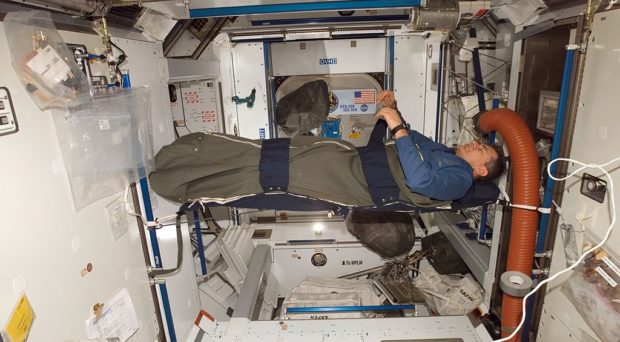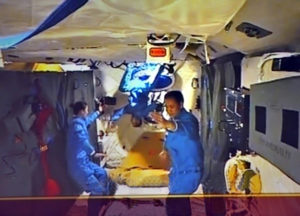
Research has shown that sleep deficiency is prevalent in astronauts, who can experience 16 sunrises and sunsets a day. The quantity and quality of sleep on orbit are reported to be reduced, even less than 5 hours experienced in the early days of spaceflight, despite National Aeronautics and Space Administration (NASA) regulations that mandate 8 hours of protected time for sleep each night. Because of this, the use of sleeping pills are pervasive during spaceflight.
For many astronauts, sleep loss is one of the most common problems that could impair their health and behavioral performance.
Sleep is an instinctual restorative process that serves to replenish both physiologically and psychologically. For many astronauts, sleep loss is one of the most common problems that could impair their health and behavioral performance.
Since 2006, our team has carried out a series of studies about the effects of 24h, 36h and 72h sleep deprivation on human physiology, psychology, performance and countermeasures in confined and isolated environments. The results suggested sleep deprivation has accumulated effects on cognition, visual alertness, operational performance, emotion, reaction to emotional face pictures and physical health.
The causes of sleep loss in astronauts remain uncertain, but are likely to include uncomfortable environments, sudden schedule adjustments, unreasonable workloads, impaired sleep homeostatic regulation, circadian rhythm desynchrony and physical/psychological discomfort.
Entering snorbit
Several countermeasures have been suggested against sleep deficiency. These include improving the sleep environment, designing reasonable work-rest schedules, pharmacologic interventions, light treatment, psychological support, crewmember selection and training.

Some countermeasures have already been used on orbit. On the International Space Station (ISS) light treatment is being tested as a new technology, which could also be considered in the construction of Chinese space station. However, the effects and the mechanism still need to be studied further.
Another novel approach is Tai Chi, which has been performed by astronauts on the Shenzou 10 and 11 space flights. Remarkably, the astronauts found that they were able to practice this in microgravity.
The achievements in this field will not only ensure the safety, health and performance of astronauts in space, but also build a foundation for future adventure in human space exploration activities. Astronauts typically spend several months on low earth orbit, but there is no limit to human potential interplanetary travel.
For example, space exploration to Mars will require unprecedented time in space – beyond 500 days with current propulsion technology. Results from Mars 500 mission experiment suggest that sleep during space exploration mission might be affected in different ways compared with the sleep on ISS.
Comments